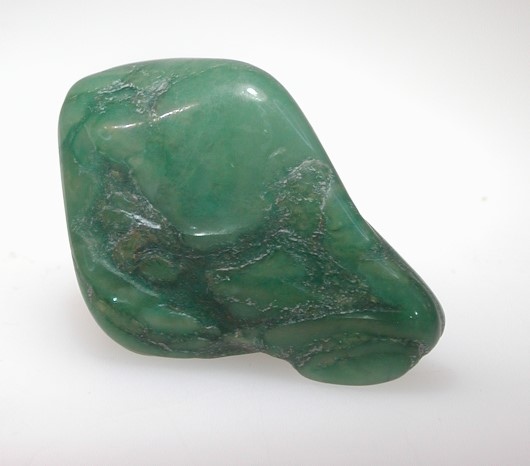The inhomogeneous appearance of a green rock marketed as »Prasem« from South Africa raised doubts about its authenticity. EDX (Energie Dispersive X-Ray) and Raman Laser analyzes performed on some samples confirmed a rock with an inhomogeneous complex mineralogical composition.
Analytical investigations
To our surprise, the X-ray diffraction analysis (EDX) of a sample with particularly hard, dark green to black inclusions reveiled the rare mineral eskolaite together with rutile and chromium bearing mica (fuchsite). Eskolait occurs only at 11 locations worldwide (e.g. Brazil, USA, Russia, India and Finland). Its hardness of 8½ is between spinel and corundum. On the other side the mineral fuchsite has a hardness of only 2½. The resulting differences in hardness within the rock lead to bud-like, roundish weathering forms, which inspired the trade name »Budstone«.
In other samples we found large amounts of plagioclase feldspar and the weathering products kaolinite and clinochlor in small quantities. These findings could be confirmed by Raman laser analyzes. This mineral paragenesis points to a metamorphic rock, the green color of which is caused by phyllosilicates (fuchsite, clinochlor). Such rocks are called »greenstones« in geology.
Conclusion
After the mineralogical investigation of several samples »Prasem« from South Africa, we can address the rock as »greenstone«. Such greenstones are exposed worldwide at numerous places. Geologists documented "greenstone belts" that strech nearly around the entire globe. The Barberton Greenstone Belt in South Africa covers an area of approximately 120 km × 60 km along the border between South Africa and Swaziland. In some places of this belt very beautiful gemrocks have been found, e.g. the green rock »Verdit«, consisting almost entirely of green mica minerals. Within the green shists, small areas of significantly different mineral compositions are quit common. It may well be possible that »Budstone« occures just a few meters away from the rock »Verdit«.
We were very surprised by the fact that little or no quartz was found in the samples investigated. This means that the classification of this rock as »Prasem« - which is a rock with a very high quartz content - is invalid. We recommend adopting the South African local name »Budstone« complemented by the name of the rock »greenstone« in brackets as follows: »Budstone (Greenstone)«.




